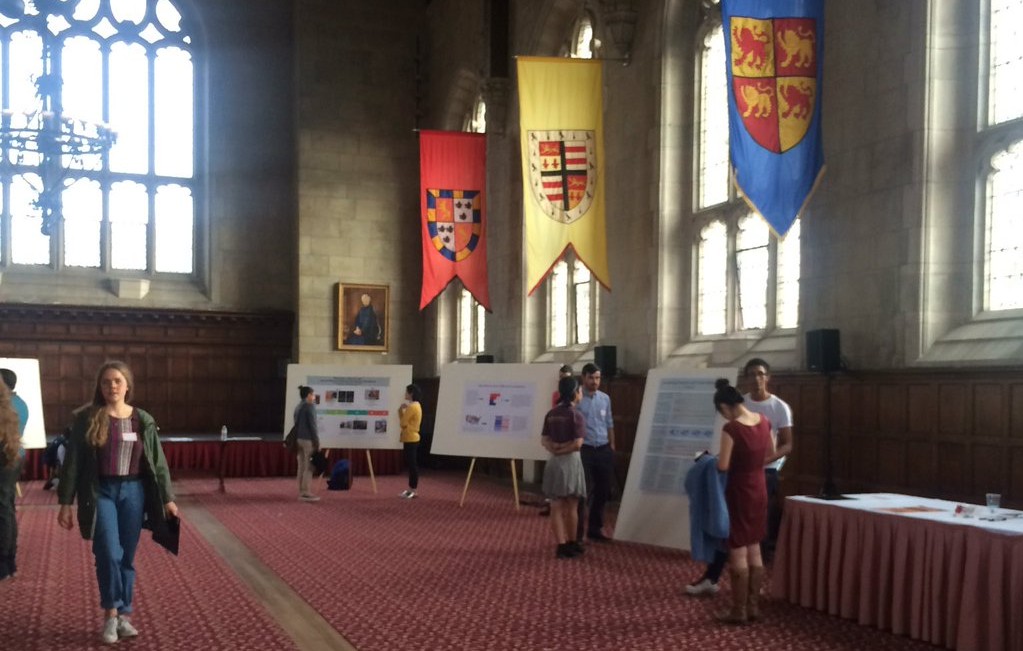Today, Re:Humanities 2016: Bleeding Edge to Cutting Edge started. I am part of the Re:Hum Working Group, comprised of students from Haverford, Bryn Mawr, and Swarthmore Colleges, and we have assembled a fantastic series of presentations by undergraduates engaging with contemporary currents in digital humanities and scholars who both apply digital methodologies in traditional humanities research while posing critical questions about those technologies.
This year we are proud to showcase the work of undergraduate scholars from 10 colleges and universities nationwide: the Tri-Colleges, The University of Chicago, University of Wisconsin, New York University, Messiah College, University of South Carolina, University of Washington, and Skidmore. We also welcome this year’s speakers: Marisa Parham, Professor of English at Amherst College, and Director of the Five College Digital Humanities Initiative And Moya Bailey, a Dean’s postdoctoral scholar of Women’s, Gender, & Sexuality Studies and Digital Humanities at Northeastern University.
Thursday’s programming featured Welcome & Check-ins, Marisa Parham’s Keynote, Poster Presentations, and Dinner in Wyndham. It was nice to finally put a face to the many students whose project proposals the Working Group had accepted since January. This conference is a culmination of the Working Group’s hard work since October. We couldn’t have done it without guidance from our faculty and staff advisors James Weissinger, Christine Dickerson, Alicia Walker, Laura McGrane, and Rachel Buurma.
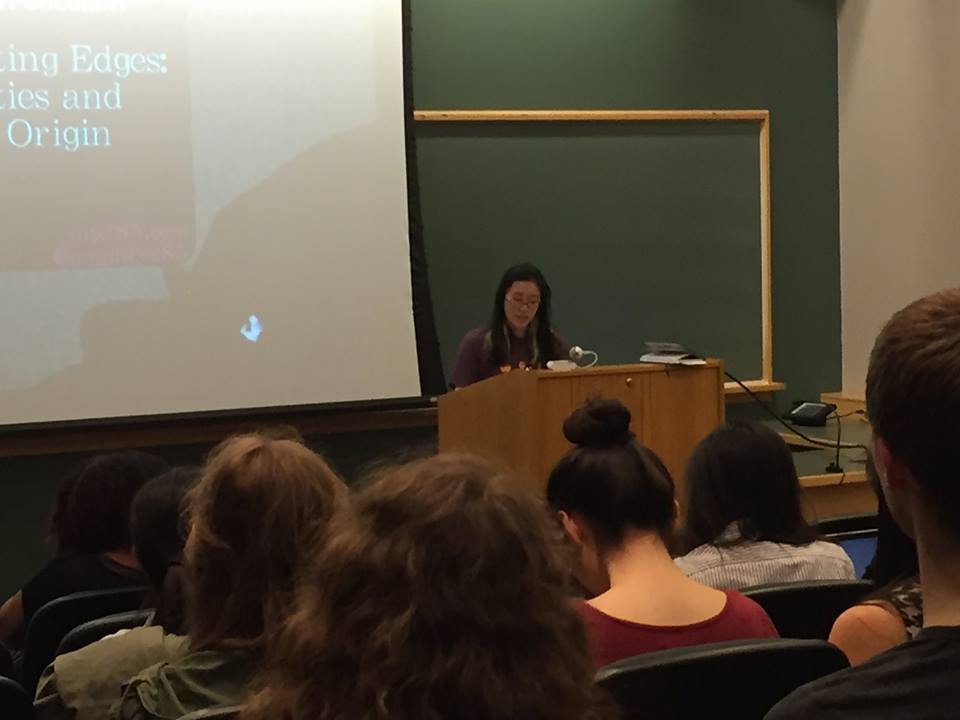 I had the honor of giving the welcome speech and introducing our keynote speaker Marisa Parham, Professor of English at Amherst College & Director of the Five College Digital Humanities Initiative:
I had the honor of giving the welcome speech and introducing our keynote speaker Marisa Parham, Professor of English at Amherst College & Director of the Five College Digital Humanities Initiative:
“Re:Humanities is proud to welcome Marisa Parham, professor of English at Amherst College and director the Five College Digital Humanities Initiative, which is a Mellon-funded grant initiative serving Amherst, Hampshire, Mt. Holyoke, and Smith Colleges, and the University of Massachusetts-Amherst. Her current teaching and research projects focus on texts that problematize assumptions about time, space, and bodily materiality, particularly as such terms share a history of increasing complexity in texts produced by African Americans. We admire her scholarship both in and out of the classroom. In particular, we appreciate the way her work uses critical and creative practice, with both academic and personal projects. For us, her ability to weave theoretical analysis into digital application fits perfectly with the intersections of public and private, of the old and the new through archiving, art, and digital interaction.”
Marisa Parham’s keynote, titled “Falling off Edges: Digital Humanities and the Question of Origin,” introduced the false assumption that technology has nothing to do with people of color and the poor. Parham made references to iRobot, Janelle Monae, Her, Ex Machina, Google, Microsoft, and the Roomba to analyze the ties between cutting edge technology and the not-so cutting edge histories and values.
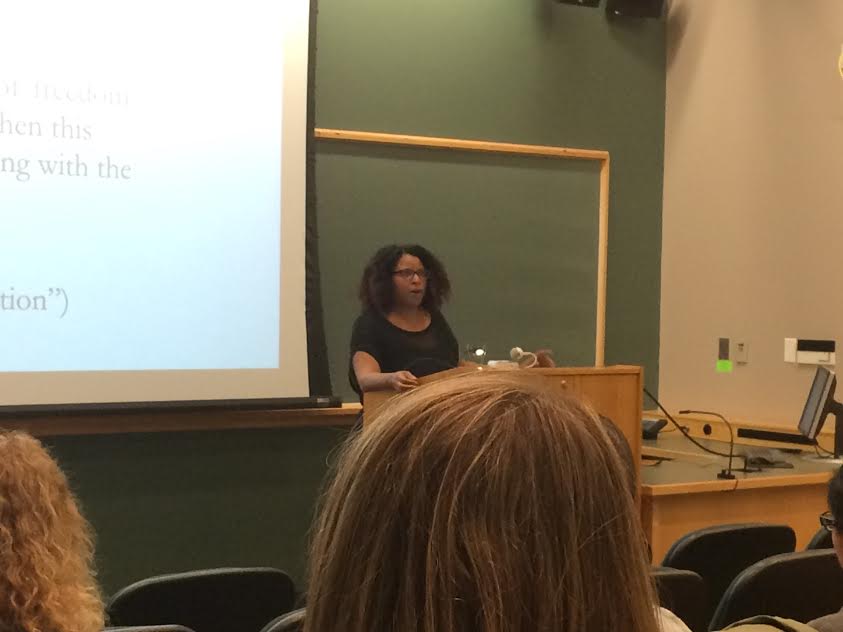
Parham asked us to consider the idea of making machines more human versus the idea of making humans machine-like. Parham pointed out that concept of labor and operalization is deeply rooted in Black identity and Black/migrant slavery and regimes of terror. Her argument was that that the humanities should not be more like STEM and engineering. If technology were signal processing, the humanities should be the process of understanding morals and practices rooted in the sciences. Digital humanities would then connect the technology with the conceptual, historical, or theoretical.
Many times materiality of the digital is hidden away from us to make the user experience more pleasurable. Think the Internet and the Cloud, or the iPhone. It’s really a bunch of extension chords and dark hot rooms. These sleek and polished “cutting edge” devices are made from “bleeding edge” methods. Did you know that many technological innovations comes from military technologies of war? Artificial intelligence and robots are the pinnacle of cutting edge, yet every robot is a ghost with a part of the past–sometimes violent pasts. Parham questioned why innovation is always so fundamentally disappointing. This is more of a way of stating a challenge, a call for a new approach, a new method of thinking.
Janelle Monae is one of those pioneers recoding history. As her alter ego, Cindi Mayweather, Monae uses form and sound in her music (such as Black radio hosting) to think or reference a specific history — the 70s and Afrofuturism.
Parham went on to discuss how women are portrayed in the digital world. Ever wondered why Siri, Microsoft’s Alexa, and the computer in the movie Her are female voiced by default? Are women bound to service you? Parham used the example of Kyoko in Ex Machina. As soon as it was revealed she was a robot, her personality and feelings were stripped. It was also interesting to see her portrayed as an Asian female. Asian females are stereotypically excessively sexualized or excessively de-sexualized.
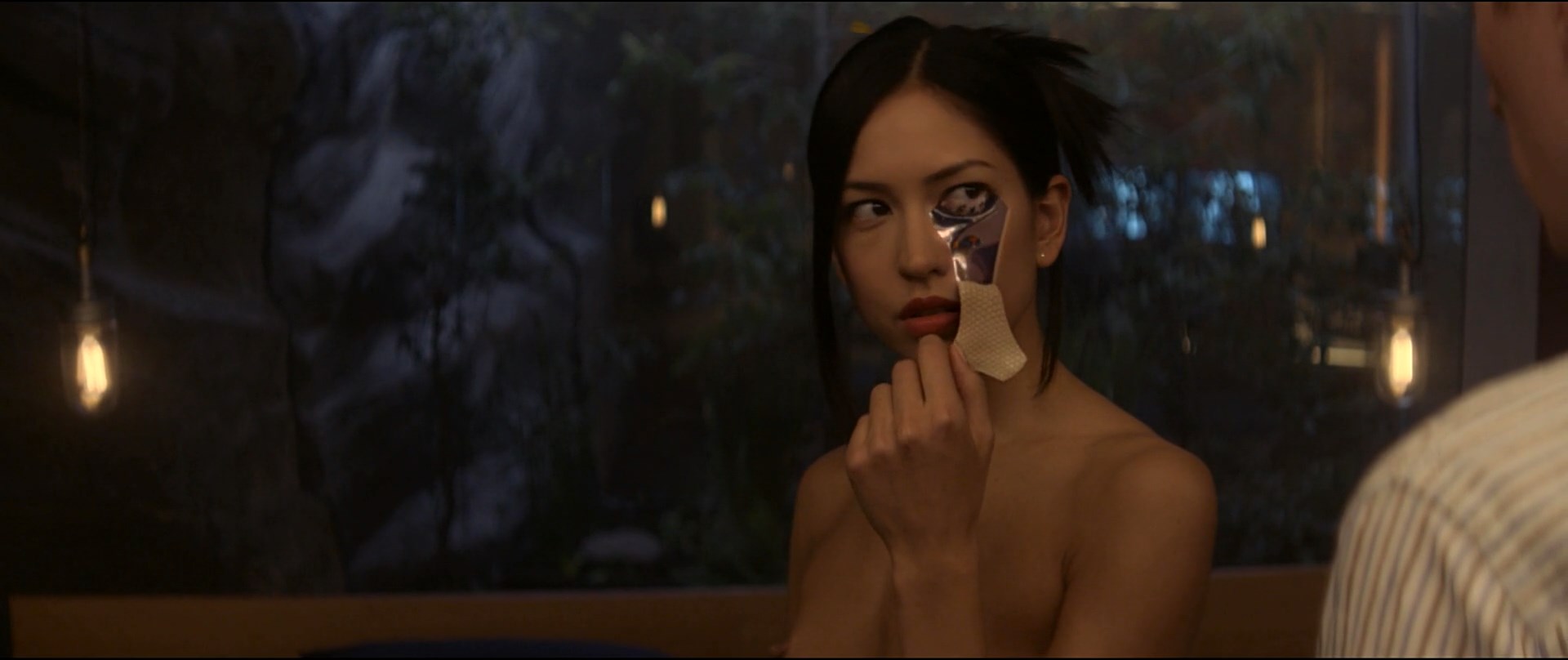
Parham concluded with a call for a more ethical relationship to cutting edge and innovation. Robots erase the labor and moral discomfort, but you should be thinking about those issues. (Hence, robot = slave = ghost — getting philosophical here!) We need a mechanism for understanding the iterations and historical connections. Iterative learning is based on flawed or misunderstood ways of thinking. These foundations are what technological innovations heavily rely on. New technology is a modified form of past technology. Human and intellectual capital is always cumulative. We must change the ways we think through “the next big thing.”
I loved Marisa Parham’s keynote. (I also love Janelle Monae.) Her message has definitely made me think about the things around me, the things I take for granted, and my education as a Physics major. I hope my generation can be the change that innovation and technology so desperately need.
I had to rush to Jazz Dance Ensemble Rehearsal after the keynote, so unfortunately I missed the poster session. I saw a glimpse of some of posters and they looked great! I returned back to the conference after dance. As always, dinner at Wyndham was delicious!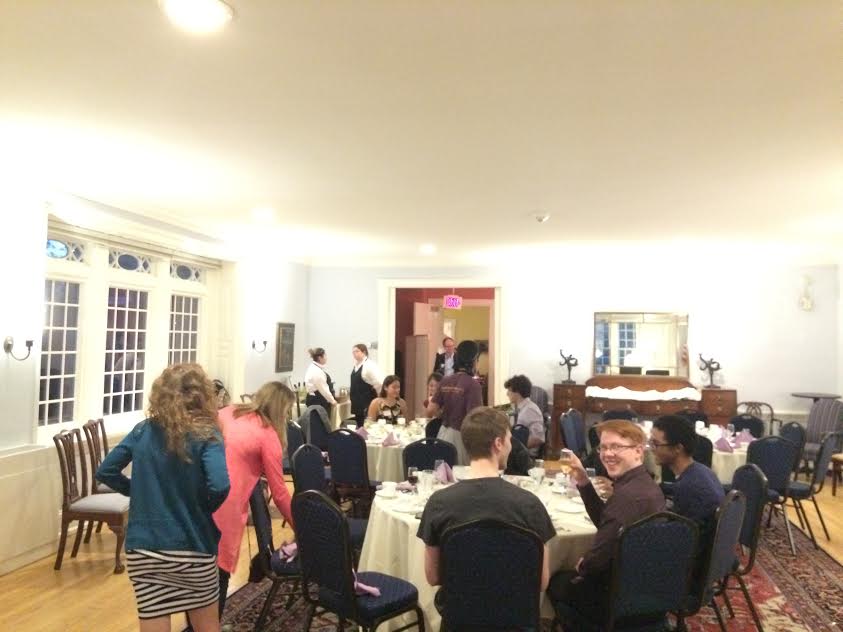
————————————————————————————————
This year, I’m fortunate to have a class schedule that works out quite well for the conference schedule. I will be at the entirety of the conference except for a 1.5 hour period tonight where I had to go to jazz dance ensemble rehearsal. Last year, I wasn’t so fortunate and had to miss Thursday night for Bi-College Orchestra rehearsal and leave early Friday for a Chemistry midterm. I’ve also played a more active role in the Working Group this year, having to step up after one of our more experienced members left. I do appreciate the time I’ve put into Re:Humanities. I really like my Working Group members: 1 from Haverford, 2 from Swarthmore, and I like working closely with Haverford Hurford Center advisors James Weissinger and Christine Dickerson (BMC’15). Looking forward to another action packed day tomorrow for Re:Humanities, Day 2!
Follow the action on Twitter @ReHumanities and #rehum16!

